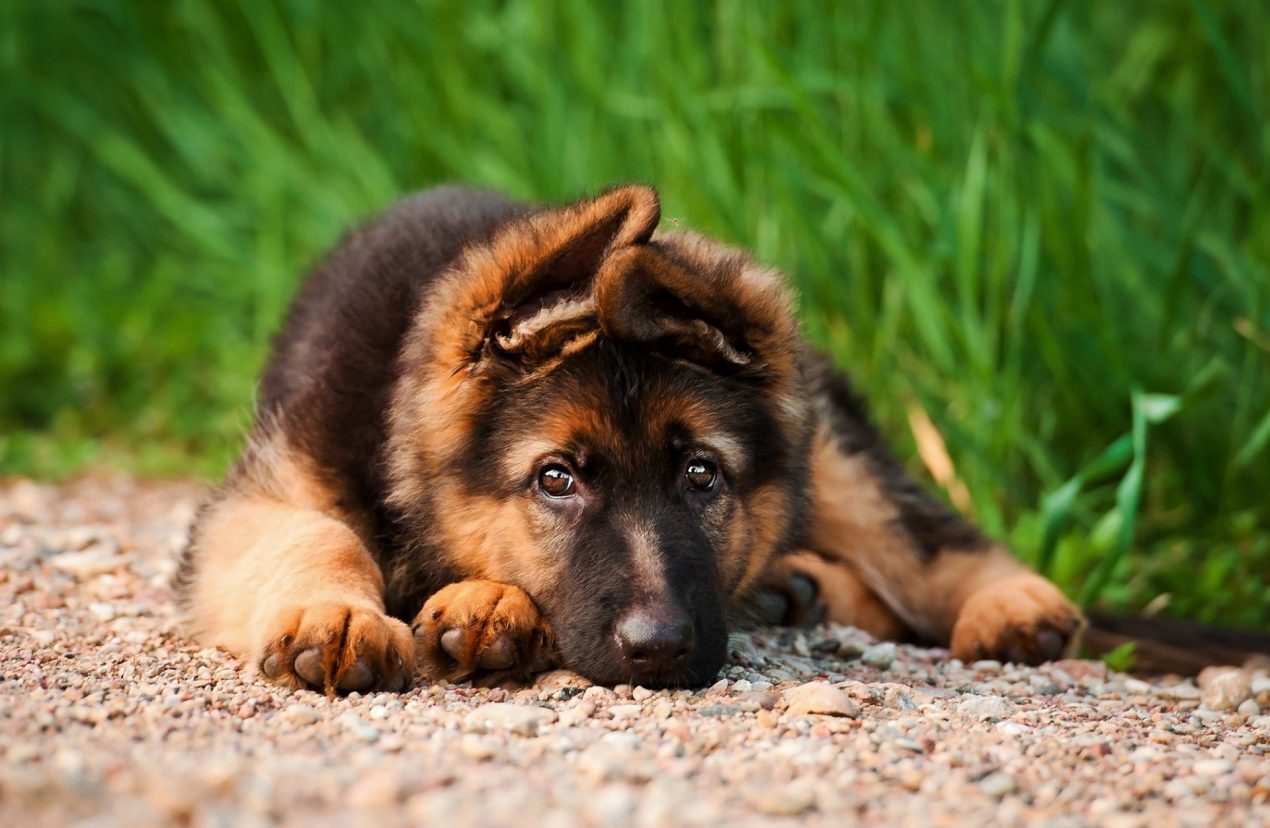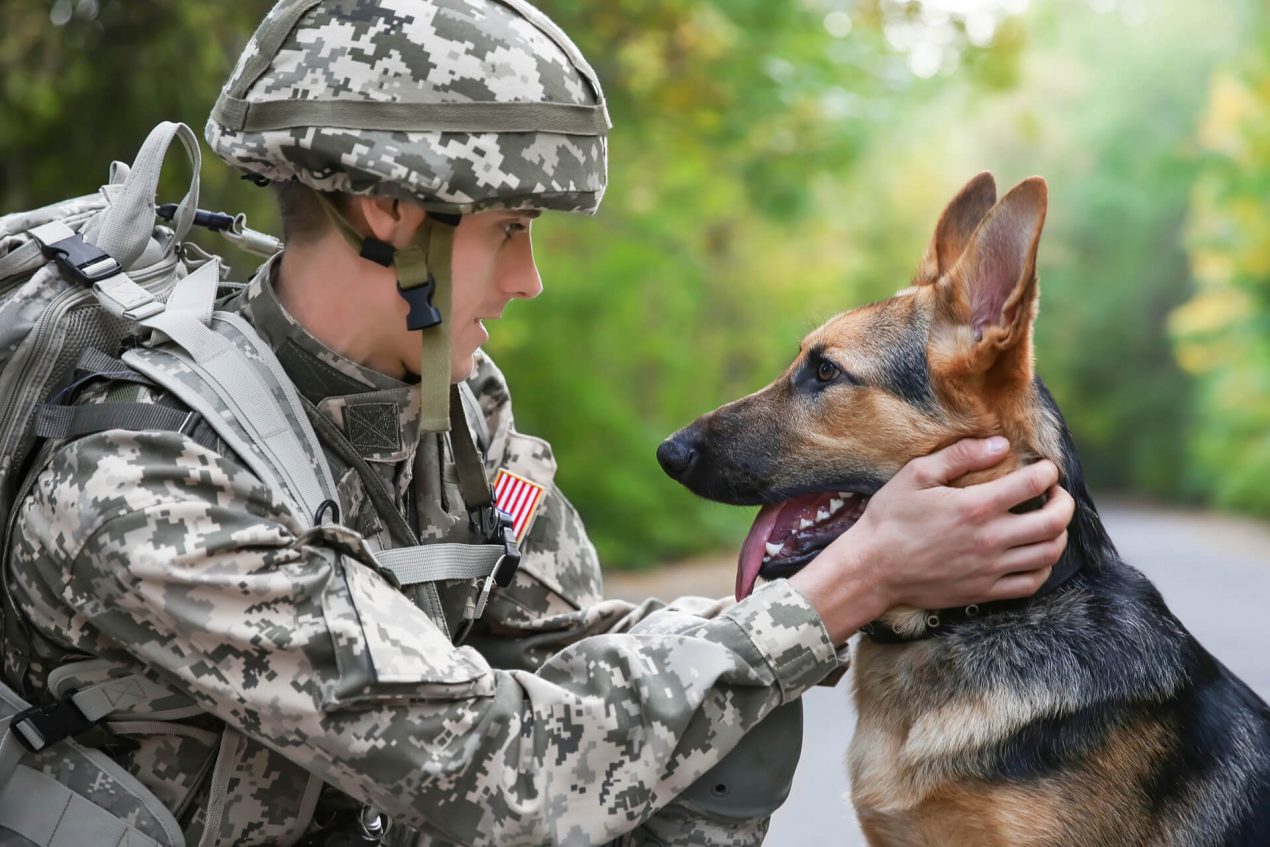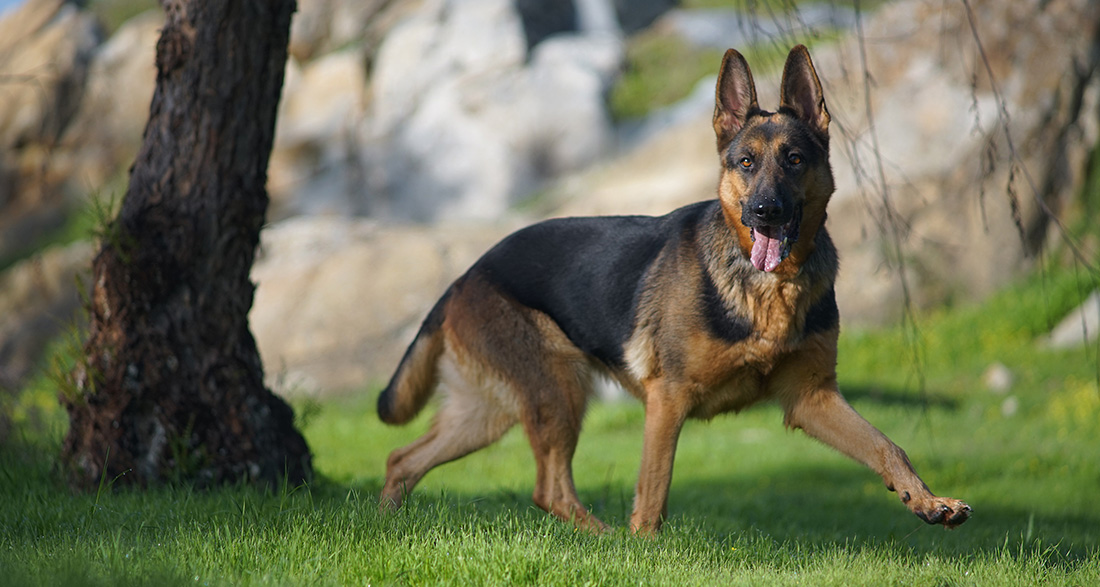The German Shepherd is one of the best-known and most popular dog breeds in the world. Its intelligence, loyalty and versatility make it the ideal companion for families, but also a valuable working dog in various fields. In this article, you will learn more about the history, appearance, care, health and choosing a suitable breeder for the German Shepherd Dog.
History of the German Shepherd
Around 1900, Captain von Stephanitz established the German Shepherd as a modern working dog breed. It was perhaps the most successful foundation of a dog breed worldwide. The German Shepherd became the symbol of a capable and intelligent dog globally. There is likely no dog as universally recognized as the German Shepherd. When people think of a dog as a friend of humans, many have the German Shepherd in mind. It’s not surprising that the first four-legged hero in film history, Rin-Tin-Tin, was a German Shepherd.
He became a Hollywood star and continues to captivate audiences as Inspector Rex in Vienna and Rome. The German Shepherd is the epitome of a high-performance working dog and simultaneously a loyal, protective friend. The German Shepherd is rooted in a centuries-old tradition of working dogs for shepherds. However, it is also a relatively young dog breed, only being bred to a standard and pedigree for the past 120 years. In the past, performance in demanding work was the sole criterion for breeding selection.
Iconic Dog Breed
In a matter of decades, the German Shepherd became the symbol of a high-performance, cooperative, and thoughtful partner to humans – worldwide. Even today, the German Shepherd is a working dog par excellence, serving in police, customs, military, or rescue services on all continents. Its all-around performance, highly developed willingness and ability for training and work in the service of humans made it legendary. Its extraordinary achievements, legendary reputation as a friend of humans, and its appearance reminiscent of a wolf form an exceptionally attractive package.
This has attracted people who see it merely as a status symbol or a lucrative business. In China, top dogs from US breeding are traded in the six-figure Dollar range. Controversial are also the breeding ideals prevalent since the 1970s: a sloping backline and an extremely angled hindquarters. The dogs bred by Captain von Stephanitz had a horizontal, straight backline, like wolves.
They were much leaner, slightly taller with a normal angulation of the hindquarters, just like wolves. Besides the show line, the working line also faces issues. Here, we increasingly see dogs with such an extreme work drive that they can no longer lead a normal life in a family.
Appearance of the German Shepherd
The German Shepherd is the absolute prototype of a dog. There is probably hardly any place on this globe where it is not known. The German Shepherd is a medium-sized, powerful dog with either short or long stock hair and erect ears. At first glance, its appearance is reminiscent of a wolf. Its official standard describes it as follows:
The German Shepherd is medium-sized, slightly stretched, powerful, and well-muscled, with dry bones and a firm overall structure.
The weight should be between 30 – 40 kilograms for males and 22 – 32 kg for females. The German Shepherd is bred in the hair varieties of stock hair and long stock hair, both of which have an undercoat. Acceptable colors include black with red-brown, brown, yellow to light gray markings, as well as solid black, gray with darker shading, black saddle, and mask. White is not allowed (see White Swiss Shepherd).
The original German Shepherd, as envisioned by the breed founder von Stephanitz, had a horizontal, perfectly straight backline and a completely normal-angled hindquarters. It was athletically light and comparatively high-legged, much like its wolf ancestor. Since the 1970s, breeders have interpreted the breed as a “trotter” with a “slightly sloping croup without a visible break” – as per the standard. However, in breeding practice, one often sees show champion dogs with a strongly sloping croup, which means a strongly sloping backline.
This is further emphasized by an extremely angled, very powerful hindquarters. The dog world worldwide mocks the “half dog, half frog” or “the rocket stance” or a dog that runs as if it has just soiled its pants. In reality, this unnatural vision imposed by humans brings severe health burdens to the dogs. The Veterinary Association for Animal Welfare notes:
From a “slightly sloping croup without a visible break,” many German Shepherds have developed an extremely sloping croup with a distinct “kink” in the topline.
They classify this misdevelopment in breeding, like many other experts worldwide, as breeding for deformities. A study from the School of Veterinary Science at the University of Surrey, published at the end of 2020, highlights the serious health issues resulting from this breeding, particularly concerning the gait. The same applies to the trend of breeding an extremely powerful and heavily angled hindquarters, which hinders healthy movement and leads to various issues with muscles, tendons, and bones.
Breed Overview
GROUP: Herding
HEIGHT: 22 to 26 inches
WEIGHT: 60 to 100 pounds
TEMPERAMENT: Intelligent, courageous, alert, bold, loyal, protective
COAT: Coarse, medium-length double coat
COAT COLOR: Black and tan, black and cream, black and red, black and silver, solid black, gray, sable. Note that blue, liver or white are unfavorable based on breed standards
HYPOALLERGENIC: No
LIFE SPAN: 10 to 13 years
Traits and Characteristics
The German Shepherd is a dog particularly deeply connected with humans. He wants to work with humans and needs this shared work to lead a species-appropriate life. It is astonishing how well these dogs can be guided and trained. This does not require blind obedience or military-style drills, as is unfortunately often practiced in training facilities. The German Shepherd wants to perform tasks assigned by their owner naturally.
For this, they have developed a pronounced ability to communicate with humans, which can even be demonstrated in their brain structure. Their high intelligence allows them to quickly understand and flexibly execute tasks. A respectful and trusting mutual relationship is the ideal basis for this. There is hardly a task that dogs, in general, can solve that a German Shepherd could not solve as well, and that too at the highest level. The Shepherd is a powerful dog who wants and can protect his family if necessary.
To demonstrate this, he regularly excels in official protection dog tests. Those who keep a German Shepherd as a companion or family dog should generally enjoy dog sports. In most disciplines, German Shepherds are champions. Dogs want and need such challenges. However, they should come from a breeding that rejects overly nervous workaholics. Based on such a foundation, German Shepherds are balanced, strong-nerved, caring, and loyal family dogs. They adapt flexibly and effortlessly to the habits of their family.
The German Shepherd is robust and easy to care for. Ideally, they live in a house with a garden. When bred, socialized, and trained responsibly, they are trouble-free companions even in challenging environments, such as the hustle and bustle of a big city. However, they are not necessarily recommended for novice dog owners.
| Affection Level | High |
| Friendliness | Medium |
| Kid-Friendly | High |
| Pet-Friendly | Low |
| Exercise Needs | High |
| Playfulness | High |
| Energy Level | High |
| Trainability | High |
| Intelligence | High |
| Tendency to Bark | High |
| Amount of Shedding | High |
Is the German Shepherd Suitable for Me?
The German Shepherd is exceptionally undemanding when it comes to external conditions for its care. It requires a close connection to its humans and family, making it unsuitable for kennel confinement. However, it is demanding when it comes to shared activities. This strong dog requires a strong hand, meaning that, based on trust and proper canine guidance, they can and want to deliver remarkable performances in the service of humans.
The military-style approach often used in some dog training places is counterproductive here. Dogs cannot truly unfold with simple submission based on intimidation or conditioning. Their fantastic nature and immense capabilities thrive only based on mutual respect and a close emotional bond. For training, you should definitely connect with the appropriate experts in dog schools and clubs.
With a well-trained Shepherd, you can effortlessly navigate all everyday situations. They will handle interactions with other dogs, even if they bark at him, with composure or quietly remain in his corner at a restaurant. For the car, an aluminum transport box is recommended. The German Shepherd is exceptionally easy to train and can be further educated.
Due to its balanced nature, high communication skills with humans, and the willingness to work for us, it is capable and willing to quickly respond to our desires.
Properly handled, it is an outstanding family dog.

How to Care for a German Shepherd?
Training and Puppy Development:
The German Shepherd is characterized by its willingness to cooperate and its strong self-confidence. Although training is not particularly difficult, it remains essential. In order to promote the dog’s good-natured character, training with a lot of empathy and patience is required. With consistency and positive reinforcement, you will quickly achieve success and shape the dog into an obedient companion.
Concentrated work and clear instructions are essential, especially if you want to train your German Shepherd to become a guard dog. In this case, a dog training school is recommended.
How Much Exercise Does a German Shepherd Need?
The Shepherd ideally needs challenges as a working dog or in dog sports. If you don’t want to work or engage in dog sports with him, you must undertake many activities with him. The German Shepherd is found as a guard dog, service dog, protection dog, search and rescue dog, or assistance dog for people with disabilities. In short, in (almost) all places where humans need the help of their four-legged friend.

Grooming the German Shepherd
A German Shepherd is quite easy to care for. Especially short-haired German Shepherds only need regular brushing. German Shepherds with long fur require a bit more care. Additionally, eyes and ears should be checked regularly. Also, it’s advisable to take a look at the claws from time to time; if necessary, they may need to be trimmed.
Once a year, it is advisable to schedule a preventive appointment with a veterinarian. There, the dog will receive the necessary vaccinations and deworming treatments.
Health and Genetic Diseases
In the German Shepherd population, several hereditary diseases are prevalent. Hip dysplasia, in particular, poses a problem, as it does in many dog breeds. The main issues that have made this wonderful breed a cause for concern today lie in the deformities of the gait (sloping backline and overly angled, too powerful hindquarters) in show lines, as well as in the hyperactive nature in working lines. You often find great German Shepherds or German Shepherd mixes in shelters.
Choosing a Suitable Breeder:
Choosing a suitable breeder is crucial for the health and well-being of your future German Shepherd. Ensure that the breeder is a member of a recognized breeding association and adheres to its breeding standards. This way, you can be sure that the puppies are raised in a healthy and species-appropriate manner. The parent animals should also have been examined for possible genetic diseases to minimize the risk of hereditary problems.
Visit the breeder in person to get an idea of the living conditions and socialization of the puppies. You can also get to know the parent animals and be convinced of their nature. A good breeder will be happy to answer all your questions and assist you with advice and support even after the puppy purchase. It is important to take your time and not feel pressured. A reputable breeder will never push you into a quick purchase but will give you the time you need to make an informed decision.
Once you have chosen a puppy, ensure that it is already vaccinated and dewormed. An ancestry certificate and a health certificate should also be provided. This way, you can be sure that your new companion is healthy and fit, and you will have many years of joy with it.
Interesting and Worth Knowing
The German Shepherd is the quintessential working dog. It is the symbol of man’s best friend. It also excels as a family dog but should be challenged and promoted in dog sports and professional tasks. Unfortunately, the “king of dogs” has become a cause for concern due to misdevelopments in breeding.

Do you have a German Shepherd or plan to get one soon? Share with me in the comments what makes the German Shepherd so special to you!


